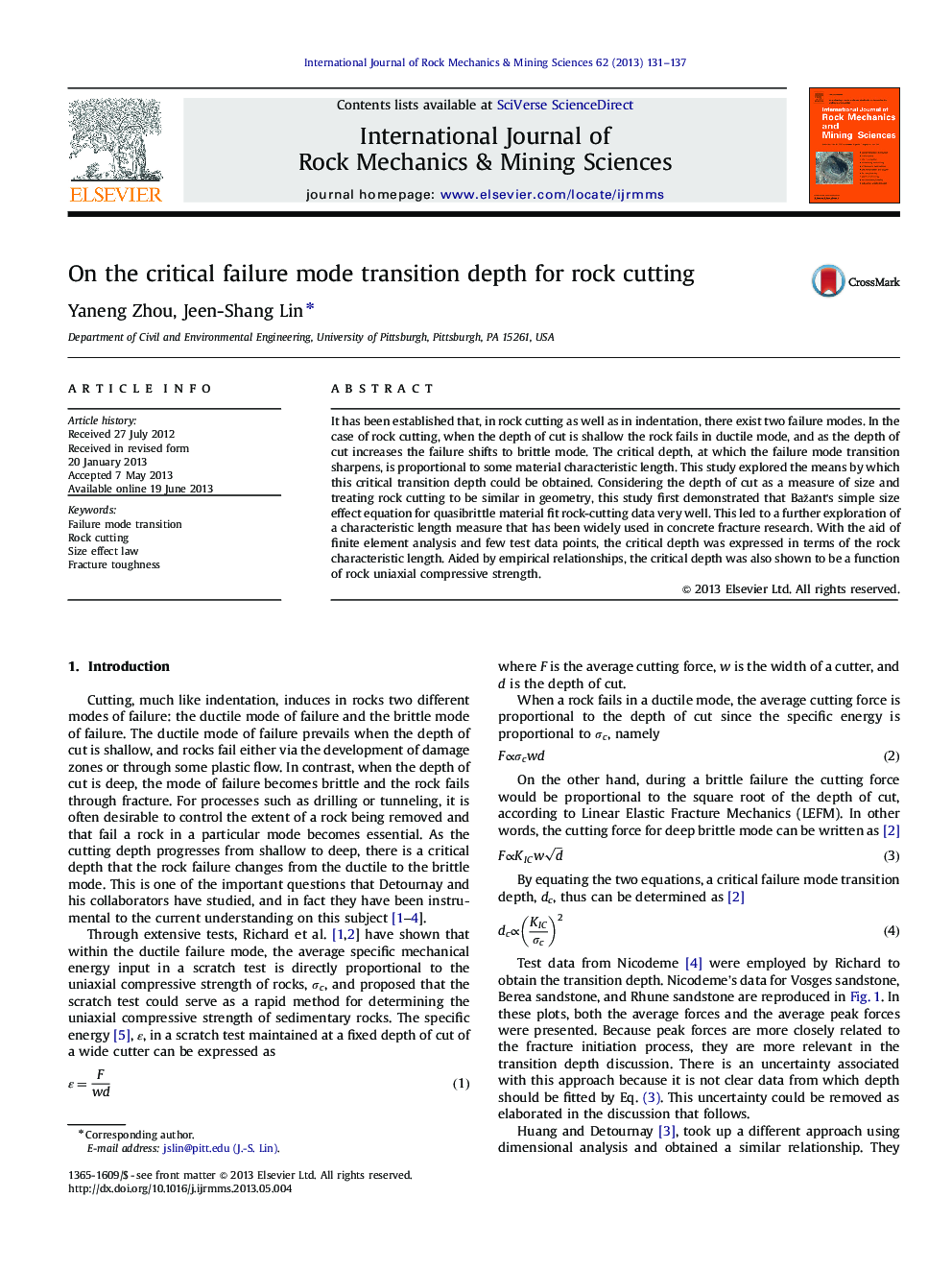| Article ID | Journal | Published Year | Pages | File Type |
|---|---|---|---|---|
| 809213 | International Journal of Rock Mechanics and Mining Sciences | 2013 | 7 Pages |
•Rock cutting via scratch tests follows Bažant's simple size effect law.•The roles and relationship of different characteristic lengths are explored.•The ratio between ductileness and brittleness determines the transition depth.•A continuum damage mechanics FEM modeling of rock cutting gives useful results.•The ductile–brittle transition depth is obtained as a function of rock strength.
It has been established that, in rock cutting as well as in indentation, there exist two failure modes. In the case of rock cutting, when the depth of cut is shallow the rock fails in ductile mode, and as the depth of cut increases the failure shifts to brittle mode. The critical depth, at which the failure mode transition sharpens, is proportional to some material characteristic length. This study explored the means by which this critical transition depth could be obtained. Considering the depth of cut as a measure of size and treating rock cutting to be similar in geometry, this study first demonstrated that Bažant's simple size effect equation for quasibrittle material fit rock-cutting data very well. This led to a further exploration of a characteristic length measure that has been widely used in concrete fracture research. With the aid of finite element analysis and few test data points, the critical depth was expressed in terms of the rock characteristic length. Aided by empirical relationships, the critical depth was also shown to be a function of rock uniaxial compressive strength.
